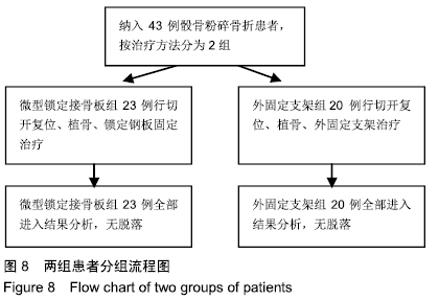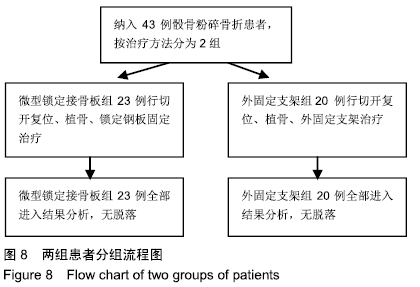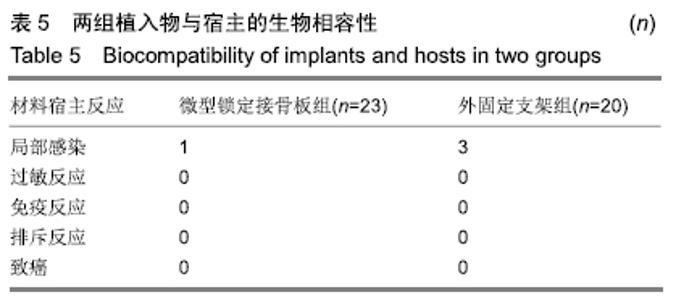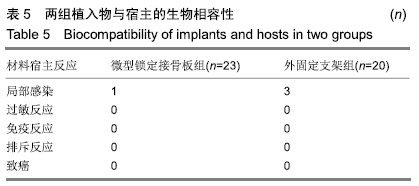[1] COURT BROWN C, ZINNA S, EKROL I. Classification and epidemiology of mid-foot fractures. Foot. 2006;16:138-141.
[2] SHIBUYA N, DAVIS ML, JUPITER DC. Epidemiology of Foot and Ankle Fractures in the United States: An Analysis of the National Trauma Data Bank (2007 to 2011). J Foot Ankle Surg. 2014;53(5):606-608.
[3] 王海立,孙涛,朱燕宾,等. 2003年至2012年河北医科大学第三医院成人骰骨骨折的流行病学分析[J].中华创伤骨科杂志,2016, 18(5):412-415.
[4] HUANG CK, KITAOKA HB, AN KN, et al. Biomechanical evaluation of longitudinal arch stability. Foot Ankle. 1993; 14(6):353.
[5] YU G, YU T, YANG Y, et al. Old nutcracker fracture of cuboid. Indian J Orthop.2013;47(3):310.
[6] Maryland foot score. J Orthop Trauma. 2006.
[7] KITAOKA HB, ALEXANDER IJ, ADELAAR RS, et al. Clinical rating systems for the ankle-hindfoot, midfoot, hallux, and lesser toes. Foot Ankle Int. 1994;15(7):349-353.
[8] WORSHAM JR, ELLIOTT MR, HARRIS AM. Open calcaneus fractures and associated injuries. J Foot Ankle Surg. 2015: S1067251615002902.
[9] 顾文奇,徐宏威,施忠民,等.合并骰骨压缩性骨折的Lisfranc损伤的手术治疗[J].中华创伤骨科杂志,2018,20(6):476-481.
[10] SHANK J, SANDS AK. Procedure 23-open reduction and internal fixation of navicular and cuboid fractures. Oper Tech Foot Ankle Surg. 2018:180-188.
[11] LUCERNA A, ESPINOSA J, BUTLER N, et al. Nutcracker cuboid fracture: a case report and review. Case Rep Emerg Med. 2018;2018:3804642.
[12] CLEMENTS JR, DIJOUR F, LEONG W. Surgical management navicular and cuboid fractures. Clin Podiatr Med Surg. 2018;35(2):S0891842217301313.
[13] SHARMA S, DHILLON MS, SHARMA G, et al. Nutcracker cuboid fractures are never isolated injuries. J Foot Ankle Surg (Asia Pacific). 2014;1:9-11.
[14] ROBERTS L, BERNASCONI A, NETTO CC. Cuboid edema syndrome following fixation of proximal fifth metatarsal fractures in professional athletes. Foot Ankle Spec. 2019: 1938640019857798.
[15] KAISER PB, BRICENO J, KWON JY. Complete cuboid dislocation with associated lisfranc injury: a case report and review of the literature. J Foot Ankle Surg. 2019;58(2): 398-402.
[16] ANGOULES AG, ANGOULES NA, GEORGOUDIS M, et al. Update on diagnosis and management of cuboid fractures. World J Orthop. 2019;10(2):71-80.
[17] HOLBEIN O, BAUER G, KINZL K. Displaced fractures of the cuboid: four case reports and review of the literature. Foot Ankle Surg.1997;3:85-93.
[18] YU G, YU T, YANG Y, et al. Nutcracker fracture of the cuboid: management and results. Acta Orthop Belg. 2012;78: 216-219.
[19] RONY L, DE SHP, STEIGER V, et al. Clinical and radiological outcomes of a cohort of 9 patients with anatomical fractures of the cuboid treated by locking plate fixation. Orthop Traumatol. 2018:S1877056818300318.
[20] 俞光荣,于涛,杨云峰,等.骰骨移位骨折的手术治疗[J].中华创伤杂志,2010,26(12):1064-1067.
[21] WORSHAM JR, ELLIOTT MR, HARRIS AM. Open calcaneus fractures and associated injuries. J Foot Ankle Surg. 2015: S1067251615002902.
[22] 牛会彬,刘中国,邓岗西,等.切开复位克氏针外固定架联合固定治疗骰骨骨折[J].临床骨科杂志,2017,20(1):49-49.
[23] 姚书章,臧建成,刘国强,等.微型外固定架结合植骨治疗骰骨爆裂骨折[J].中国骨与关节损伤杂志,2014,29(12):1295-1296.
[24] VAN RAAIJ TM, DUFFY PJ, BUCKLEY RE. Displaced isolated cuboid fractures: Results of four cases with operative treatment. Foot Ankle Int. 2010;31:242-246.
[25] WEBER M, LOCHER S. Reconstruction of the cuboid in compression fractures: Short to midterm results in 12 patients. Foot Ankle Int. 2002;23:1008-1013.
[26] BONNEL F, TEISSIER P, COLOMBIER JA, et al. Biometry of the calcaneocuboid joint: Biomechanical implications. Foot Ankle Surg. 2013;19(2):70-75.
[27] MARTIN C, ZAPF A, HERMAN DC. Cuboid syndrome: whip it good. Curr Sports Med Rep. 2017;16:221.
[28] CLEMENTS JR, DIJOUR F, LEONG W. Surgical management navicular and cuboid fractures. Clin Podiatr Med Surg. 2018;35:145-159.
|









